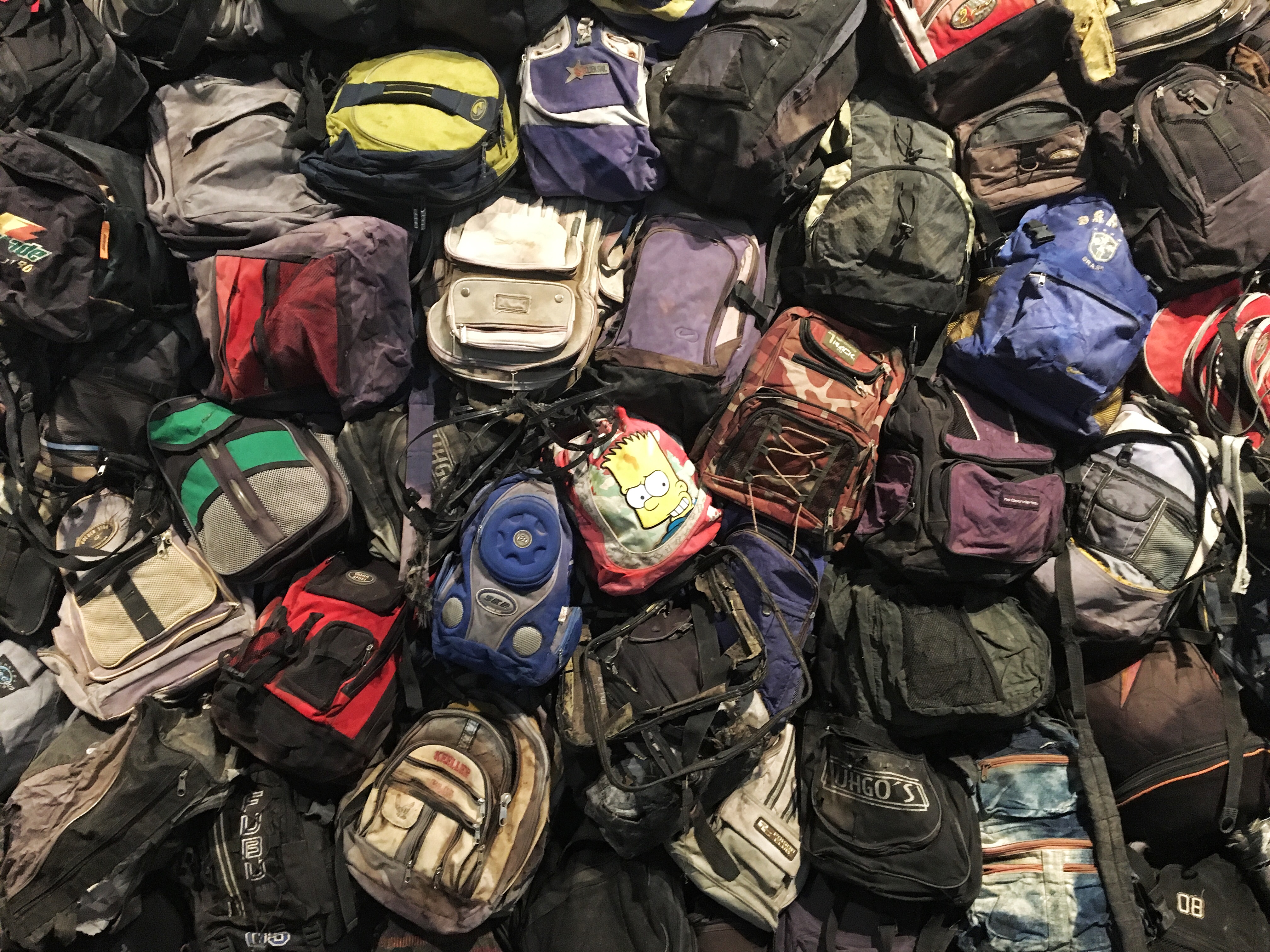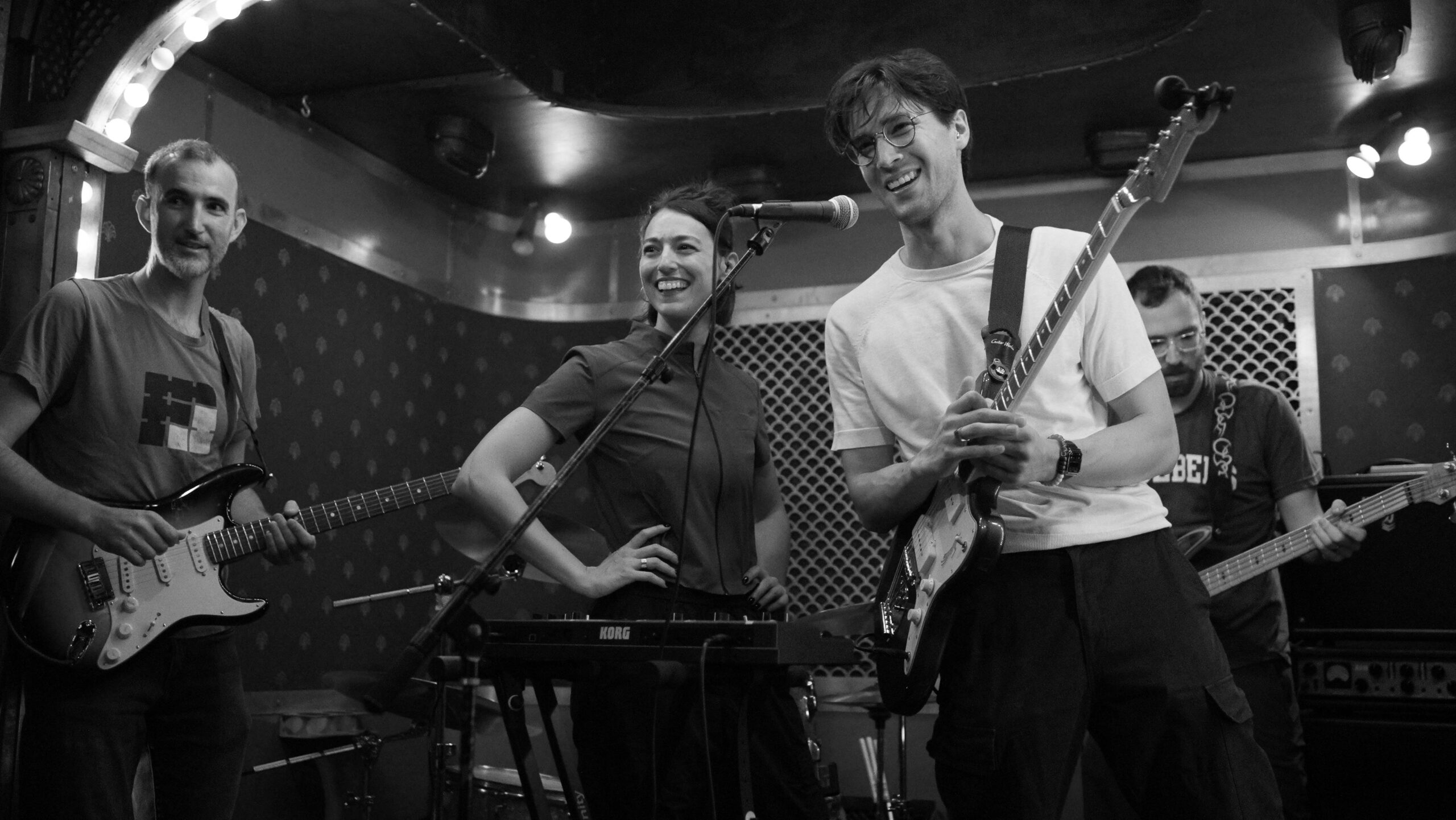A wall of dusty backpacks hangs in the gallery of Parsons’ building at 2 W. 13th St., a towering metaphor for the walls and fences along the border between the United States and Mexico.
“I don’t want to empathize with the backpacks, I want to empathize with the people who left these things behind,” said Jason de León, the University of Michigan anthropologist and collector of the backpacks.
On Feb. 2 The Sheila C. Johnson Design Center’s Anna Maria and Stephen Kellen gallery opened its doors to State of Exception/Estado de Excepción, an exhibition displaying objects left behind in the desert by undocumented migrants crossing the border from Mexico into the United States.
With the Trump administration’s persistence on moving forward with the refugee ban as well as plans for building a wall on the Mexican border, the exhibition hopes to illuminate the realities of the migrant experience, organizers said.
Together, photographer Richard Barnes and curator Amanda Krugliak worked with de León to create the multimedia exhibition in order to bring forth the stories and voices of journeyed migrants across the Sonoran Desert in the South of Arizona. For scale, the wall they’ve curated at Parsons ere is 83-feet long. According to the U.S. Customs and Border Protection, the physical barriers spanning the country’s border are 653 miles long.
De León said that these objects now have a different meaning to him and that for him personally in light of a growing laundry list of injustices and human rights violations.
“For almost a decade I’ve been pretty vocal about the importance of stopping people from dying in the Arizona desert and now I’m more energized because I don’t know any other thing to do,” he said.
A long-time friend of Barnes’, Sandro Marpillero, Italian architect and teacher at Columbia Graduate School of Architecture, said that even after living in the United States for over 30 years, he is still a resident alien. Nonetheless, he feels that it is time to take a political stance. “It’s a strange condition at this moment to not have a full political voice in this country. However, there’s many many many ways to contribute and I think this [exhibition] is a perfect example,” Marpillero said.
Radhika Subramaniam, director and chief curator at SJDC Galleries said that she feels very heartened by the number of people who have been interested in the show during its installment, reaching beyond just the students and faculty. “All sorts of people have walked into the gallery during its making,” she said…
“It makes me realize it touches a chord in everyone in our institution,” Subramaniam added.
About 500 sandy backpacks entirely cover the back wall, the largest wall iteration the exhibition has displayed so far, according to Barnes. These, along with the clothes, miscellaneous objects and the forensic photos of people’s belongings, were collected by de León as part of his research for The Undocumented Migration Project.
During a question-and-answer walkthrough of the exhibition with the artists on the opening night, De León explained the archaeological process behind and difficulty of collecting these objects in a scientific way, as well as the long time fight it has been to have people recognize these objects as artifacts rather than trash. The exhibition, he said, is “really trying to push the migrant voice to the front as well as to highlight the various kinds of ambiguities that underline what these objects can or can’t tell us about the migrant experience.”
The installation features photographs and video footage by Barnes, as well as original audio recordings of interviews de León had with undocumented migrants talking about their experiences. The latter are scattered along the wall, placed inside the backpacks, as if the people telling their stories are right there, adding another dimension to the mundane objects and bringing them to life. “Their mass gives them this strength of power and echoes this idea of ‘the wall,” Barnes said.
Aziza Rozi, an 18-year-old freshman at Parsons who helped with the installation, including filling those hundreds of sandy bags, said it was an emotional and overwhelming process to go through as well as one she couldn’t quite understand. “When you’re in the moment and you feel the dust and little particles going in your nose, in a way it’s like you’re there with them you feel the energy off the book-bags and you feel a human presence,” Rozi said.
In terms of going through the process as an artist, Krugliak feels similarly to Rozi. “Every time it takes me a part, but at the end, that’s where I want to be,” she said. “I don’t really want to feel like I’m exhausted with my empathy, I want to be kind of broken and taken apart,” and she hopes it does the same for the people who come to see the exhibition.
To Alfonso Calixtro, a 20-year-old Mexican-American illustration student at Parsons whose work touches on immigrant rights and explores his own struggles with cultural identity, it did just that. He said seeing the piece “The Things They Carried”, and the belongings of so many lost souls brought tears to his eyes.
Calixtro recalls the first appearance of the backpacks being pinned to the wall during the installation and how emotional he felt that Parsons was displaying this work given the current political situation. “At that moment, it helped me realize a little more the importance of my work,” Calixtro said . “The fact that Parsons would engage in this matter made me feel appreciated, protected, and valued by my school.”
The exhibition also impacted the vision Calixtro had for the scale his work and helped him slow down his creative process. “It gave me peace of mind, knowing that a message similar to mine was being delivered by the school,” he said.
Barnes adds that he “hope[s] this exhibition asks more questions than it resolves, and that to [him], is a place to be and it’s an uncomfortable place to be as well but it’s important.”
The exhibition is on view from Feb. 3 through Apr. 17.
Photos by Yasmin Ahram.








One response
[…] Read the full article at the Original Source.. […]